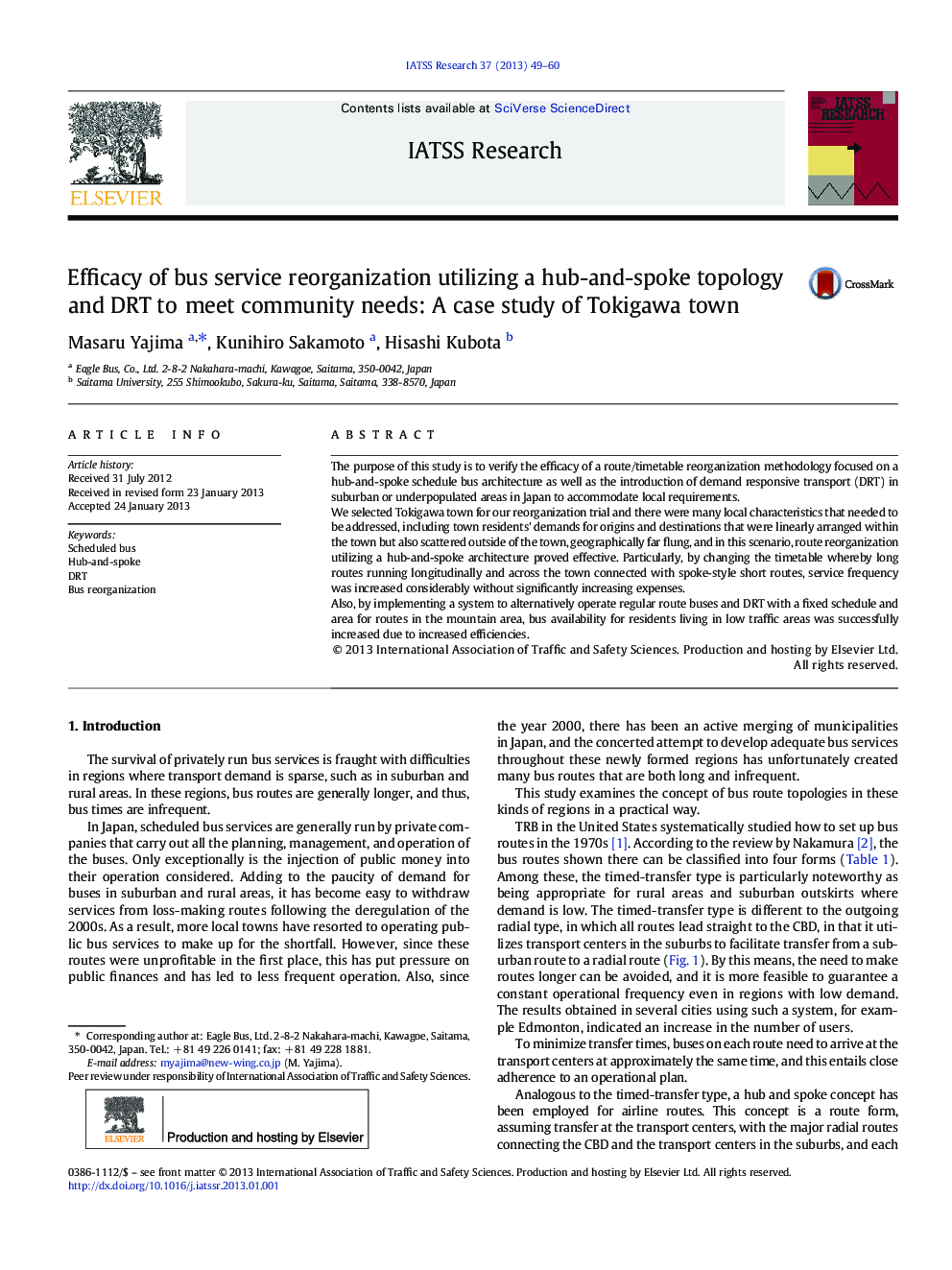| Article ID | Journal | Published Year | Pages | File Type |
|---|---|---|---|---|
| 1104651 | IATSS Research | 2013 | 12 Pages |
The purpose of this study is to verify the efficacy of a route/timetable reorganization methodology focused on a hub-and-spoke schedule bus architecture as well as the introduction of demand responsive transport (DRT) in suburban or underpopulated areas in Japan to accommodate local requirements.We selected Tokigawa town for our reorganization trial and there were many local characteristics that needed to be addressed, including town residents' demands for origins and destinations that were linearly arranged within the town but also scattered outside of the town, geographically far flung, and in this scenario, route reorganization utilizing a hub-and-spoke architecture proved effective. Particularly, by changing the timetable whereby long routes running longitudinally and across the town connected with spoke-style short routes, service frequency was increased considerably without significantly increasing expenses.Also, by implementing a system to alternatively operate regular route buses and DRT with a fixed schedule and area for routes in the mountain area, bus availability for residents living in low traffic areas was successfully increased due to increased efficiencies.
► We propose a reorganization solution based on local characteristics. ► We implement this solution in Tokigawa town. ► We describe the reorganization process. ► Unified bus reorganization is successful.
